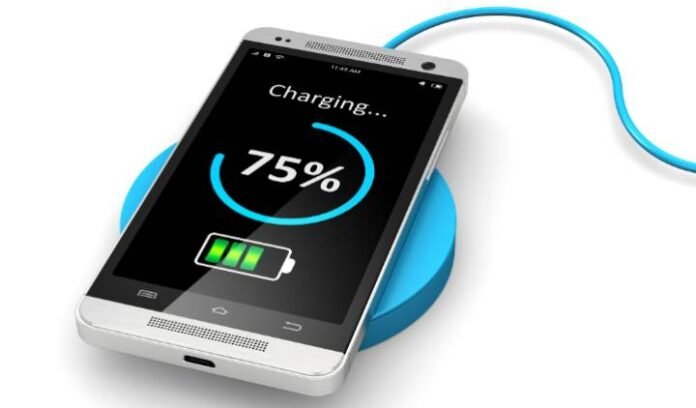In today’s world, smartphones are indispensable. From managing work emails to staying connected with loved ones, they serve as our digital lifelines. But one thing that can disrupt this seamless experience is poor battery life. Ensuring optimal battery performance is crucial not just for convenience but also for prolonging the overall lifespan of your device. This article explores the best practices to maximize your smartphone’s battery life while maintaining its health.
Understanding Smartphone Battery Basics
Modern smartphones predominantly use lithium-ion batteries due to their efficiency and rechargeability. However, these batteries have limitations:
- Finite Charge Cycles: Lithium-ion batteries have a limited number of charge cycles (typically 300-500 full cycles). A charge cycle is completed when the total amount of power equal to 100% of the battery is used, whether in a single full charge or across multiple partial charges.
- Battery Degradation: Over time, lithium-ion batteries degrade due to chemical reactions inside the cell, reducing their capacity and efficiency.
Knowing this helps in adopting habits that reduce unnecessary strain on the battery.
Tips for Maximizing Battery Life
1. Avoid Overcharging Your Device
Leaving your smartphone plugged in after it reaches 100% can lead to overheating, which stresses the battery. Most modern smartphones have built-in mechanisms to stop charging at 100%, but it’s still advisable to unplug once fully charged.
2. Use the Right Charger
Using non-certified or low-quality chargers can harm your battery. Stick to chargers from reputable brands or those provided by your phone manufacturer. These chargers are optimized for your device’s power requirements, ensuring safe and efficient charging.
3. Charge Within the Optimal Range
It’s best to keep your battery between 20% and 80% charged. Charging from 0% to 100% repeatedly can wear out the battery faster. Short, frequent charges are better than deep discharges.
Reduce Battery Drain
4. Adjust Screen Brightness
The display is one of the biggest battery drains on smartphones. Using auto-brightness or reducing the screen brightness manually can significantly save power.
5. Turn Off Unnecessary Features
Features like Bluetooth, Wi-Fi, and GPS consume battery even when not actively in use. Turn these off when they’re not needed. For example:
- Disable GPS when not using navigation apps.
- Turn off Wi-Fi if you’re in an area without networks.
6. Limit Background Activity
Many apps run in the background, consuming battery for updates and notifications. Review your app settings to restrict unnecessary background activity:
- On Android: Go to Settings > Battery > Background restrictions.
- On iOS: Navigate to Settings > General > Background App Refresh.
7. Manage Push Notifications
Push notifications from apps constantly pinging for updates can drain battery life. Turn off notifications for non-essential apps.
Optimize Charging Habits
8. Avoid Wireless Charging for Everyday Use
Wireless charging is convenient but generates more heat than wired charging, which can negatively impact battery health over time. Use wireless charging sparingly and prefer wired charging for regular use.
9. Charge in Cool Conditions
Heat is one of the biggest enemies of battery health. Avoid charging your phone in direct sunlight or while using power-hungry apps. If your phone feels hot during charging, remove the case to allow better heat dissipation.
10. Don’t Let Your Battery Drain Completely
Allowing your battery to drain completely frequently can shorten its lifespan. If your phone dies, try to recharge it as soon as possible rather than leaving it in a depleted state for an extended period.
Use Power-Saving Modes
11. Enable Battery Saver
Most smartphones come with built-in power-saving modes that limit background activity, reduce brightness, and optimize performance to conserve energy. Enable this mode when your battery is low or when you need to prolong usage.
12. Dark Mode for OLED Screens
If your smartphone uses an OLED display, enabling dark mode can save significant battery life. In OLED screens, pixels are turned off entirely to display black, reducing energy consumption.
Manage Apps and Software
13. Update Apps Regularly
App developers release updates to fix bugs and optimize battery usage. Keeping your apps updated ensures they are running efficiently.
14. Uninstall Battery-Draining Apps
Some apps, especially games or poorly optimized applications, are notorious for draining the battery. Monitor your battery usage under Settings > Battery Usage and uninstall apps that consume excessive power.
15. Avoid Overloading Your Phone with Apps
A cluttered phone with numerous installed apps can increase background activity and drain the battery. Stick to essential apps and periodically review and remove unused ones.
Plan for Long-Term Battery Health
16. Avoid Extreme Temperatures
Both extreme cold and heat can damage your battery. If you’re in a hot environment, avoid using your phone for resource-heavy tasks like gaming or video editing. In cold conditions, keep your phone close to your body to maintain its temperature.
17. Store Your Device Properly
If you’re storing your phone for an extended period, charge the battery to about 50% and turn it off. Avoid storing it fully charged or completely drained.
18. Replace Your Battery When Needed
Batteries degrade over time, and if you notice significant drops in performance or capacity, it might be time to replace the battery. Many manufacturers offer battery replacement services.
Smartphone Features That Help Extend Battery Life
Modern smartphones come equipped with features that help users manage their battery efficiently. Leverage these tools to optimize usage:
- Adaptive Battery: Found in Android devices, this feature learns your usage patterns and limits battery use for apps you rarely use.
- Battery Health Insights: iPhones have a Battery Health section under settings that shows the maximum capacity of your battery and whether it needs servicing.
- Do Not Disturb: Activating this mode reduces notifications and prevents unnecessary screen wake-ups.
Misconceptions About Battery Life
- Myth: Closing apps saves battery life.
- Reality: Frequently force-closing apps can actually drain more power because the system uses additional energy to relaunch them.
- Myth: Charging overnight damages the battery.
- Reality: Most smartphones stop charging when they reach 100%. However, the slight trickle charge that maintains 100% can generate heat, which may degrade the battery over time.
- Myth: Using your phone while charging is harmful.
- Reality: While it’s safe to use your phone during charging, resource-heavy activities can generate extra heat, which isn’t ideal for battery health.
Conclusion
Optimizing smartphone battery life is about adopting the right habits and using your device’s built-in tools wisely. By managing charging practices, controlling background activity, and avoiding extreme temperatures, you can significantly extend your battery’s performance and longevity. In an age where our devices are more integral to our lives than ever before, taking care of your smartphone’s battery ensures it remains a reliable companion for years to come.


